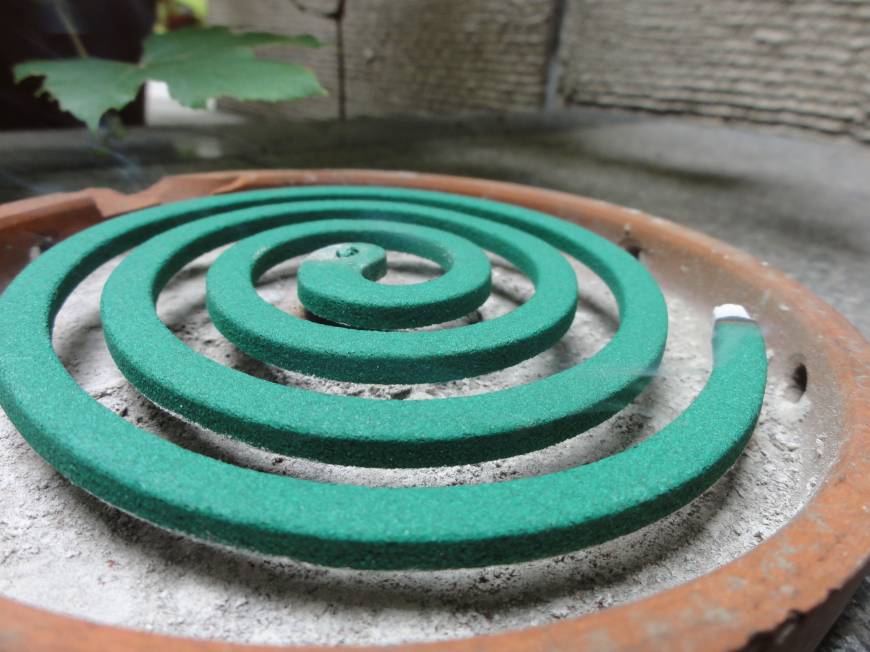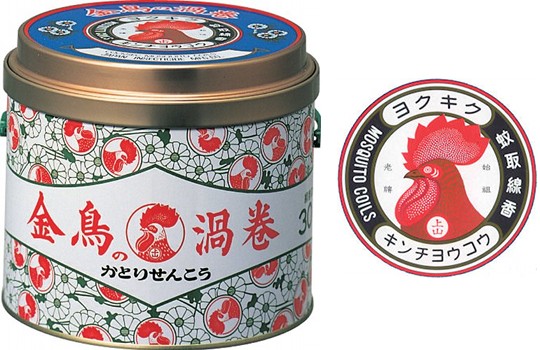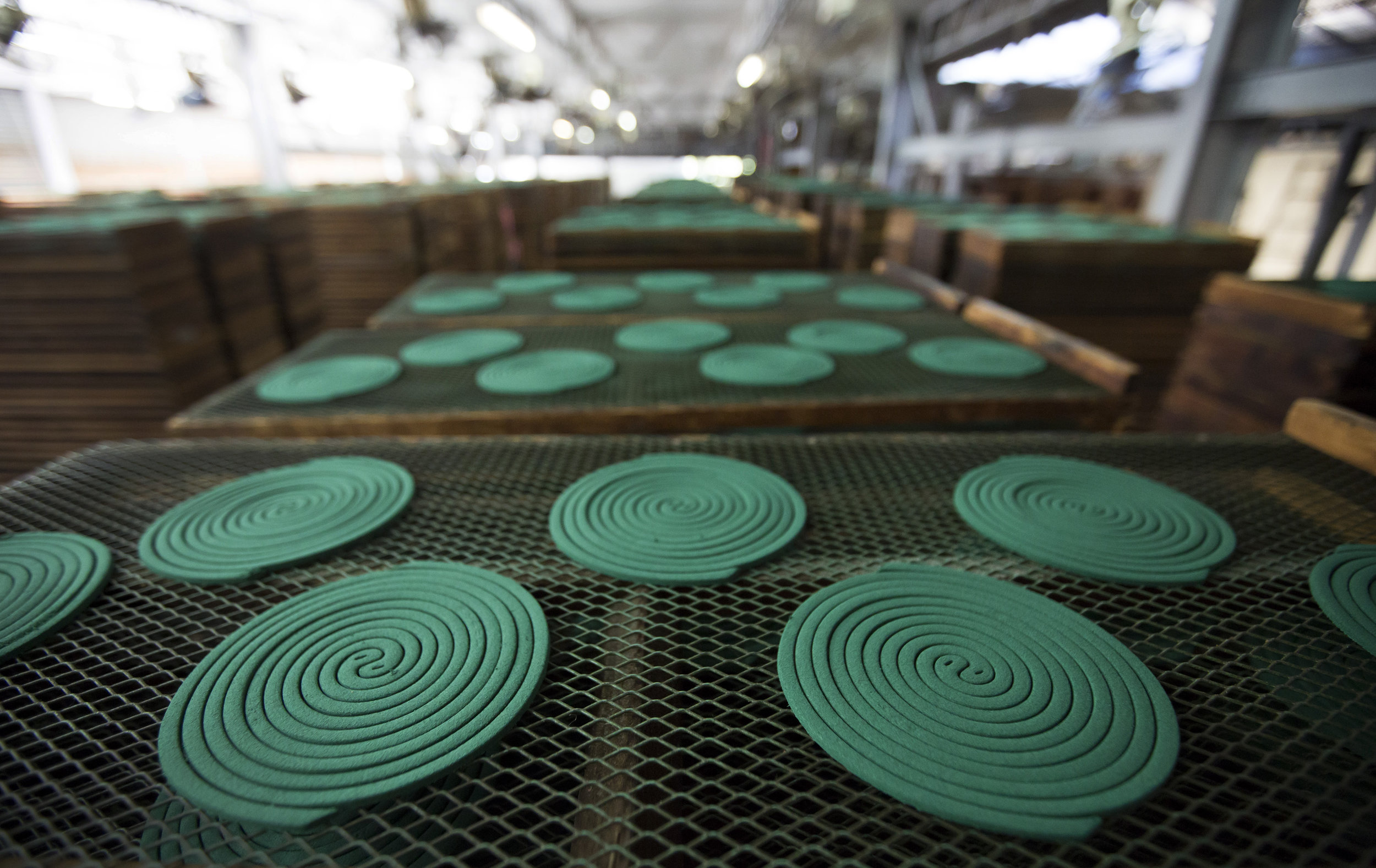Katorisenko - Mosquito Coils, Tokyo Showa Antique Market
Mosquito coils were invented in Japan, at the end of the 19th century. A man named Ueyama Eiichiro was in the business of exporting mandarin oranges when Fukuzawa Yukichi, the famous author, statesman and founder of Keio University, introduced him to a seed trader in the United States. This dealer offered Ueyama seeds of a flowering plant that he claimed would knock insects dead.
Ueyama decided to import the seeds and start growing the plant in Japan. It was a member of the aster family, Tanacetum cinerariifolium, there was something in the flower heads, when dried and ground into a powder, that proved lethal to insects. Ueyama called the plant jyochūgiku (which loosely means “bug-banishing chrysanthemum”) and built a business that is still a leader in pest control today.
Initially, Ueyama mixed the flower powder into starch bases to create incense sticks that would repel insects. They worked quite well but burned down too quickly, barely lasting 40 minutes. Then in 1895, when Ueyama was still searching for a way to make a longer-lasting product, his wife Yuki suggested he make longer sticks and coil them into a spiral shape. The first mosquito coil was produced in 1902 was 75 centimeters in length when uncoiled. The coils were a hit and were hand-rolled until 1957 when production was mechanized. Since then, very little has changed about Ueyama’s Kincho brand-mosquito coils, including the deep green color and the old-fashioned packaging with the trademark red rooster head.
The active compound, originally obtained from the jochūgiku flower although it can now be synthesized, is called pyrethrin. It occurs naturally in the seed cases of the flowers and has powerful insecticidal activity. In small doses it repels insects and in higher concentrations it kills them by attacking their nervous systems. Pyrethrin is a very common ingredient in insecticides around the world.
Dai Nihon Jochugiku Co. Ltd., the current incarnation of Ueyama’s company, headquartered in Osaka. The mosquito-coil market is alive and well, with strongest sales to older consumers who grew up with them. At the same time, the company has added new products to keep pace with changes in the way Japanese live. Until the early postwar period, most Japanese lived in homes that were very much open to the outdoors. But there has been a shift to smaller, more tightly constructed homes. In such environments, the smoke from mosquito coils can be irritating so the company developed no-smoke alternatives.
In the 1960s, they invented devices that plug into electric outlets and diffuse mosquito repellents into the air, replenished by changing a small mat or liquid dispenser. More recently they have added a spray that can protect a room from mosquitoes for up to 12 hours with a single pump.
More people seem to be conserving electricity by turning off their air-conditioners and reviving the old practices for keeping comfortable in the summer. Many Japanese feel very nostalgic about katori senkō, and the time when life was slower in Japan.”
To use a mosquito coil, you first place it in a holder to keep it safe and off the ground where it can get air to burn. Simple holders are often included with the coils, but some people get quite particular about what they use to contain their coils, with pig-shaped ceramic holders being a perennial favorite. You light the outer end of the spiral and it burns slowly, progressing toward the center, emitting a mosquito-repelling smoke. There are different sizes and types, but a coil that is 75 cm long and 10.5 cm in diameter will provide protection for about seven hours.
Now these coils can be found all over the world.
Tokyo Showa Retro Antiques Market
A flea market that takes you back to Japan’s golden age, offering an abundance of retro treasures bursting with vibrant color and unique style. Time to get nostalgic for the good old days, specifically the Showa Era, from 1926-1989 when post-war Japan sped forward into modern times. Browse vintage objects and ephemera, from rare collectibles to throwback oddities, including furniture, records, textiles, accessories, toys, signs and more. This is a specialist flea market so don’t expect rock-bottom prices, but any retro enthusiasts will, at the very least, find this a visual treat well worth the admission fee.
Please note that this event may be postponed or cancelled in accordance with ongoing measures to prevent the spread of COVID-19.









